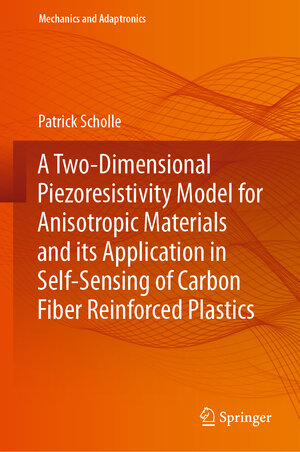
A Two-Dimensional Piezoresistivity Model for Anisotropic Materials and its Application in Self-Sensing of Carbon Fiber Reinforced Plastics
von Patrick ScholleThis thesis works on the topic of fiber-reinforced plastics and discusses the measurement of strain with embedded sensors. Embedding sensors into a structure fundamentally poses challenges arising from the differences in mechanical properties of sensor and structure. This thesis works on the research area of Self-Sensing, where these challenges are overcome by using carbon fibers for both load-carrying and strain-sensing functions. Starting with a literature review, this thesis proposes three research hypotheses, which are targeted to describe the Self-Sensing properties of unidirectional carbon fiber reinforced plastics (CFRPs) for strain measurements. These hypotheses assume, that the electric anisotropy of the material results in a complex voltage distribution within a Self-Sensing specimen. In order to discuss this point further, a two-dimensional piezoresistivity model based on the Laplace equation is introduced. The developed model newly allows to quantify the electricpotential changes in specimens with arbitrary geometrical dimensions and electric anisotropy.
Furthermore, this thesis discusses a set of experimental results on the piezoresistive properties of unidirectional CFRP made with the pultrusion process. Overall, the results of the experiments indicate that the most repeatable results are obtained for specimens with electric contacts at their cut-end. This approach allows to manufacture Self-Strain-Sensing rods with a gauge factor of approximately 1.9 that can be used in a multifunctional manner for both load-carrying and strain-sensing purposes. Furthermore, a novel measurement setup is developed, which allows to acquire the electric potential distribution on the surface of electrical conductors with very high spacial resolution. This experimental setup newly reveals that the current flow in specimens can be more complex than assumed in a two-dimensional model.




